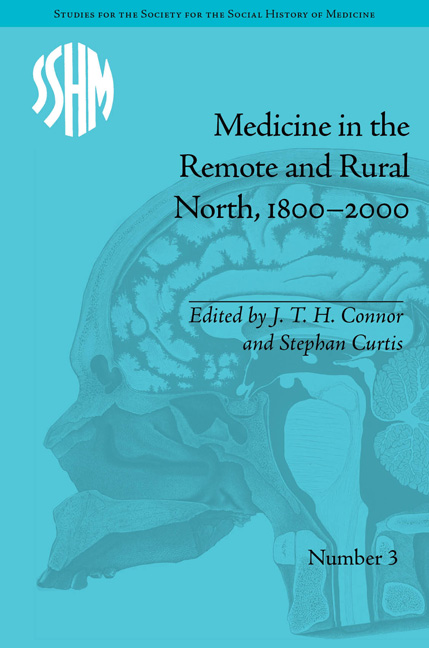Book contents
- Frontmatter
- CONTENTS
- Acknowledgements
- List of Contributors
- List of Figures and Tables
- Introduction: Cores/Peripheries – Rural/Remote: Medicine, Health-Care Delivery and the North
- Part I Remote Medicine and the State
- Part II Doctors and Doctoring in Remote Areas
- 5 A Country Doctor: Health Care in a Mid-Nineteenth-Century Swedish Remote Area
- 6 Medical Reports from the 1800s and What they Tell about Health Conditions, Population and the Work of Doctors in Peripheral Norway
- 7 ‘Medicine is Here to Stay’: Rural Medical Practice, the Northern Frontier and Modernization in 1930s' Newfoundland
- 8 Policing Practitioners on the Periphery: Elite Physicians and Profession-Building in a Bicultural Province, 1920–39
- Part III Women, Health Care and the Practice of Medicine
- Notes
- Index
5 - A Country Doctor: Health Care in a Mid-Nineteenth-Century Swedish Remote Area
from Part II - Doctors and Doctoring in Remote Areas
- Frontmatter
- CONTENTS
- Acknowledgements
- List of Contributors
- List of Figures and Tables
- Introduction: Cores/Peripheries – Rural/Remote: Medicine, Health-Care Delivery and the North
- Part I Remote Medicine and the State
- Part II Doctors and Doctoring in Remote Areas
- 5 A Country Doctor: Health Care in a Mid-Nineteenth-Century Swedish Remote Area
- 6 Medical Reports from the 1800s and What they Tell about Health Conditions, Population and the Work of Doctors in Peripheral Norway
- 7 ‘Medicine is Here to Stay’: Rural Medical Practice, the Northern Frontier and Modernization in 1930s' Newfoundland
- 8 Policing Practitioners on the Periphery: Elite Physicians and Profession-Building in a Bicultural Province, 1920–39
- Part III Women, Health Care and the Practice of Medicine
- Notes
- Index
Summary
The winter of 1851 was not a good time for the new doctor in Vemdalen, Johan Ellmin. He did not only have to adjust to life in a new environment, he also found his sleep disturbed. One night during Easter, he heard noise from the yard at the farm where he rented a room. A group of youngsters were trying to convince the young farm maid to leave the farm and come with them, and Ellmin soon found himself in a dispute with the intruders. This was neither the first nor the last time this happened, nor was it the only problem the doctor had to face. Placed in an unfamiliar and unfriendly environment, far away from family, friends and colleagues, it was perhaps not surprising that he was often ill at ease.
This article uses the experiences of Dr Johan Ellmin in the district of Härjedalen, Sweden, to shed light on some major themes of nineteenth-century medicine. By discussing how the health-care system was spread throughout Sweden, as well as outlining the obligations of provinsialläkare (district medical officers),1 this text relates the activities of one doctor serving in a remote area to the development of medicine and medical organization in a significant historical period. The main sources used here are the reports that Ellmin sent to the Sundhetskollegium (National Board of Health) from 1851 to 1859.
- Type
- Chapter
- Information
- Medicine in the Remote and Rural North, 1800–2000 , pp. 93 - 114Publisher: Pickering & ChattoFirst published in: 2014

